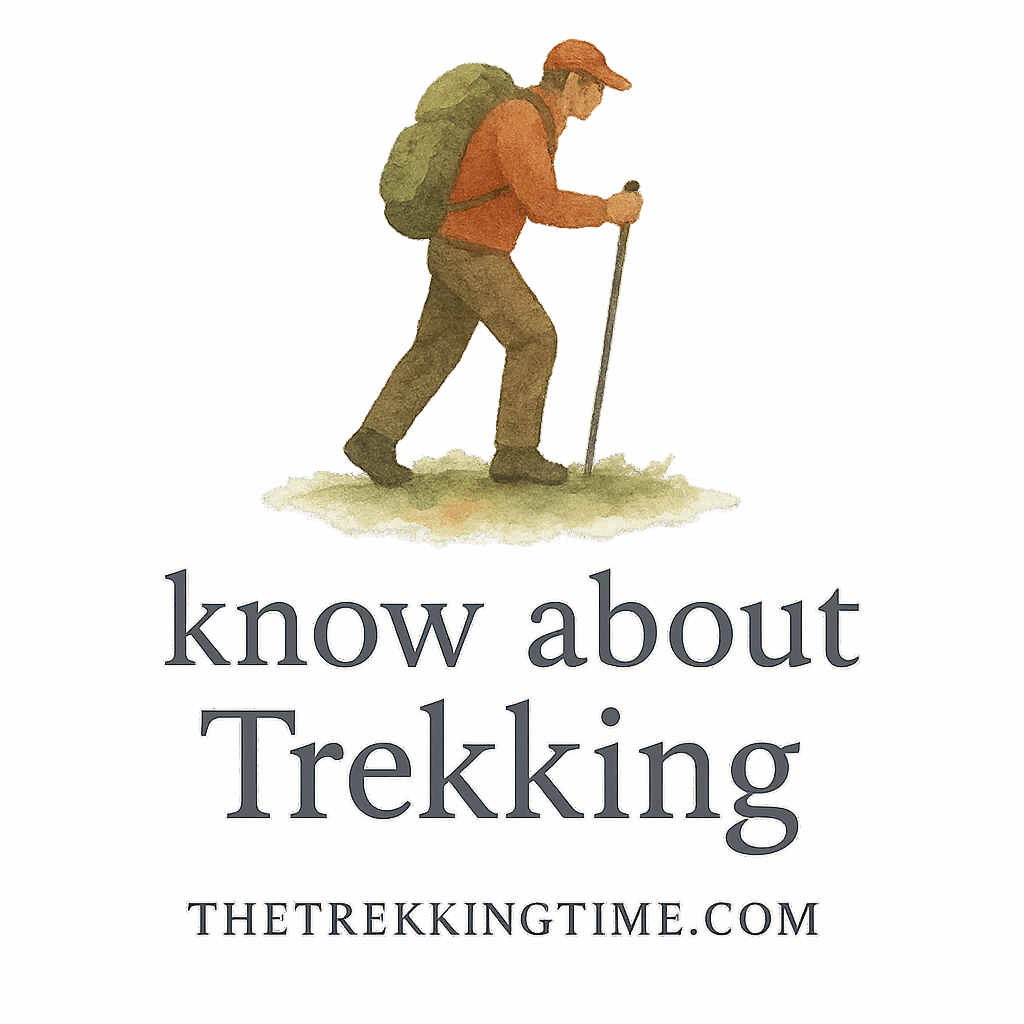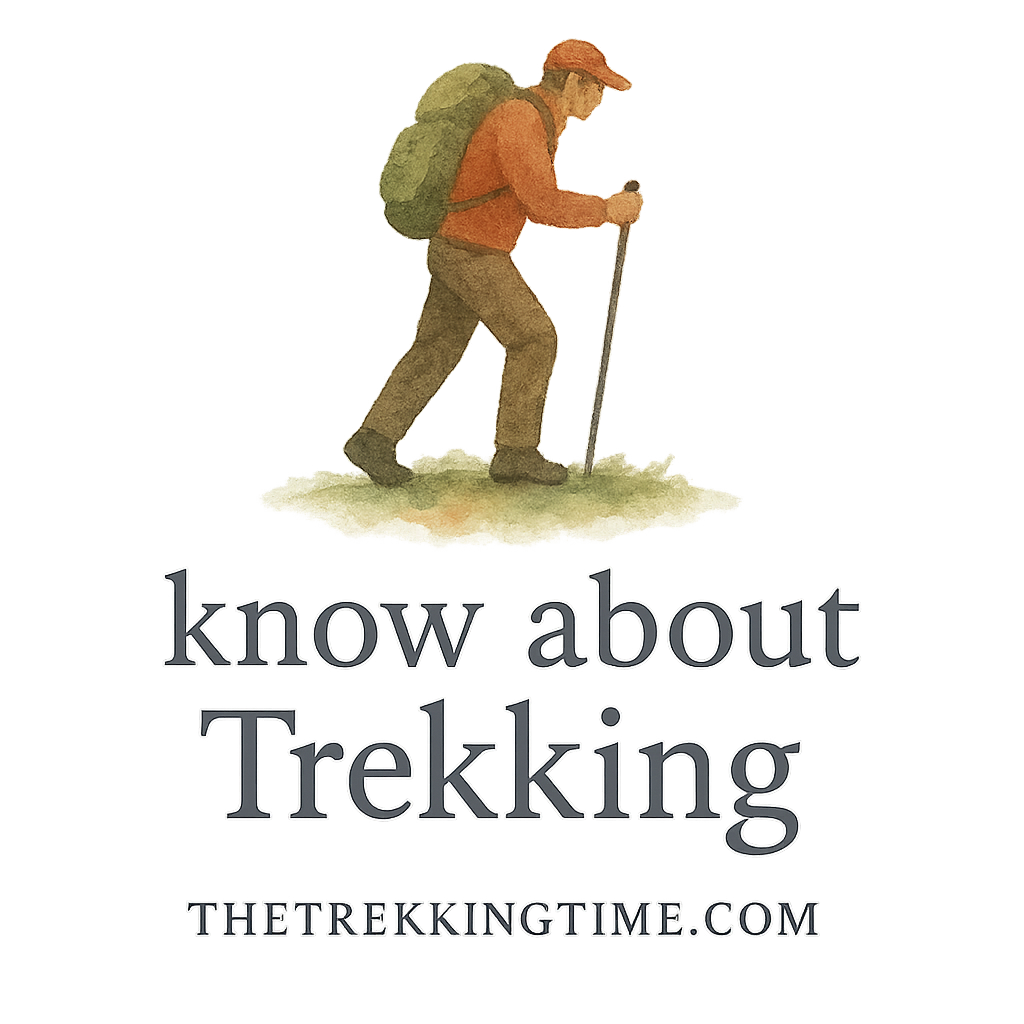Introduction
Ever found yourself wondering, “Is there really a difference between hiking and trekking?” You’re not alone. A lot of people use these terms interchangeably, but guess what? They’re not the same thing. While both involve walking through nature, the real contrast lies in the experience—the difficulty, the gear, the time commitment, and even your mindset.
In this article, we’re diving into the 5 key differences between hiking and trekking, helping you pick the right adventure based on your goals, fitness, and wanderlust.
Along the way, we’ll guide you to helpful resources like trekking basics, fitness prep, and essential gear over at The Trekking Time. Let’s lace up and dig in!
What is Hiking?
Definition and Scope
Hiking generally refers to a long walk on well-established paths or trails, often done for recreation, fitness, or a breath of fresh air. Hikes typically last a few hours to a full day, and most are doable without specialized gear.
Popular Hiking Trails
- Appalachian Trail segments (USA)
- Mount Takao (Japan)
- Blue Mountains (Australia)
You’ll find more curated trails under the hiking category on The Trekking Time.
Why People Love Hiking
Think of hiking as nature’s therapy session. It’s relaxing, manageable, and easy to plan—perfect for a weekend recharge. Many hikers swear by it for improving mental health, boosting wellness, and building healthy habits.
What is Trekking?
Definition and Scope
Trekking goes beyond a simple walk in the woods. It’s typically a multi-day journey through rough terrain, sometimes without clear paths. Think camping in the wilderness, traversing mountain passes, and relying on maps or guides.
Famous Trekking Routes
- Everest Base Camp (Nepal)
- Inca Trail (Peru)
- Annapurna Circuit (Himalayas)
Explore more trekking destinations and tips for routes on The Trekking Time.
Why Trekking Attracts Adventurers
Trekking draws in the thrill-seekers, the ones hungry for challenges, self-discovery, and unforgettable stories. It tests your limits and rewards you with soul-shaking views and a deep sense of achievement.
1. Distance and Duration
Hiking: Short and Sweet
Hiking is usually:
- 2 to 20 kilometers (1-12 miles)
- Done in a few hours or a single day
This makes it easy to fit into a weekend or even an afternoon escape.
Trekking: Extended Journeys
Trekking stretches the distance:
- 20+ kilometers (12+ miles) often across multiple days
- May involve overnight camping, village stays, or base camps
If you’re serious about it, don’t miss Trekking Basics to prepare accordingly.
2. Terrain and Environment
Hiking: Well-Marked Trails
Hikers usually stick to maintained paths. These trails:
- Are mapped and signposted
- Stay near civilization
- Offer easy navigation and lower risks
Ideal for a casual stroll through outdoors beauty.
Trekking: Rugged and Remote
Trekking pushes you out of your comfort zone:
- Trails can be steep, rocky, or snow-covered
- Minimal signs or man-made facilities
- High altitudes and extreme weather in places like the Himalayas
This is where your trekking safety knowledge is critical.
3. Required Fitness Level
Hiking: Moderate Fitness
If you can handle a brisk walk or a staircase without gasping, you’re golden for most hikes. Hiking builds your performance gradually.
Trekking: Demanding Physical Preparation
Trekking requires endurance and serious fitness training. Before your first trek:
- Improve cardio and leg strength
- Practice with a loaded backpack
- Build mental toughness
Get help from Trekking Fitness Prep.

4. Gear and Preparation
Hiking Essentials
For a half-day hike, you’ll typically need:
- Comfortable shoes
- Light backpack
- Water, snacks, sunscreen
You can learn more under the hiker and trail categories.
Trekking Gear and Packing Tips
Trekking demands more:
- Durable boots
- Sleeping bag and tent (if camping)
- Multi-day food supply
- First-aid and navigation tools
See the gear and packing guide for a full checklist.
5. Mental and Physical Challenge
Hiking for Relaxation
Hiking can be meditative. It’s a way to unwind, reflect, or connect with nature. You don’t need to push yourself too hard—just enjoy the walk.
Trekking for Endurance and Grit
Trekking is where you test your mettle. It involves:
- Weather unpredictability
- Limited resources
- Fatigue, altitude, and physical strain
You’ll learn self-reliance and responsibility the hard (but rewarding) way.
Similarities Between Hiking and Trekking
Despite their differences, they share some DNA:
- Both promote health and wellness
- Both connect you with nature and build discipline
- Both require etiquette and safety awareness
- Both are under the broader adventure category of trekking
Choosing What’s Right for You
Ask yourself:
- How much time do I have?
- What’s my current fitness level?
- Do I crave a challenge or a chill weekend?
Start with hiking, then scale up to trekking. Or dive right into a life-changing expedition with guidance from The Trekking Time.
Conclusion
So, there you have it: hiking and trekking may seem similar, but they cater to vastly different experiences. Hiking is your comfy weekend buddy. Trekking? It’s your wild, unpredictable friend who drags you up mountains and shows you the stars.
Whether you’re chasing waterfalls or mountain summits, both journeys are worth every step. Need help choosing routes, training, or packing? Dive into The Trekking Time and explore resources tailored for both adventurers and wanderers.
FAQs
1. Is trekking harder than hiking?
Yes, trekking is typically more physically and mentally demanding due to longer durations and tougher terrain.
2. Can I go trekking without experience?
You can, but preparation is key. Start with easier treks and use resources like trekking basics to prepare.
3. What kind of shoes are best for trekking?
Look for waterproof, high-ankle boots with good grip. Hiking shoes work for lighter trails but not for rugged trekking.
4. How do I train for my first trek?
Check out trekking fitness prep, do cardio, and practice walking with gear.
5. What’s the biggest risk in trekking?
Altitude sickness, poor weather, or injuries. Always read up on safety tips and security essentials.
6. Are hiking and trekking good for mental health?
Absolutely. Both are proven to reduce stress and enhance mental health.
7. Where can I find beginner-friendly trekking routes?
Explore the trekking destinations section for curated treks suited to all levels.


